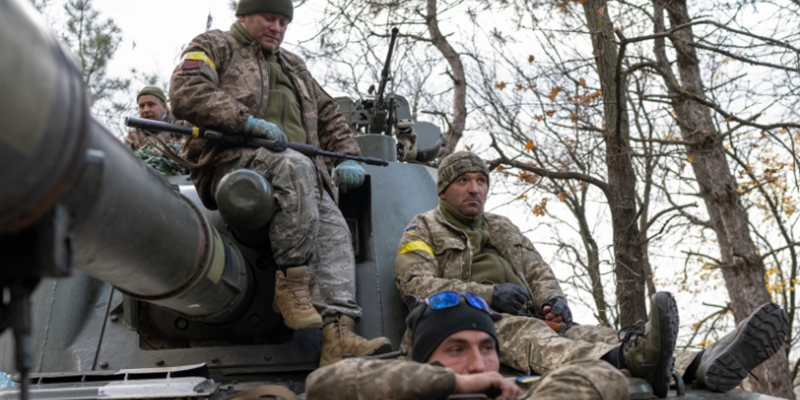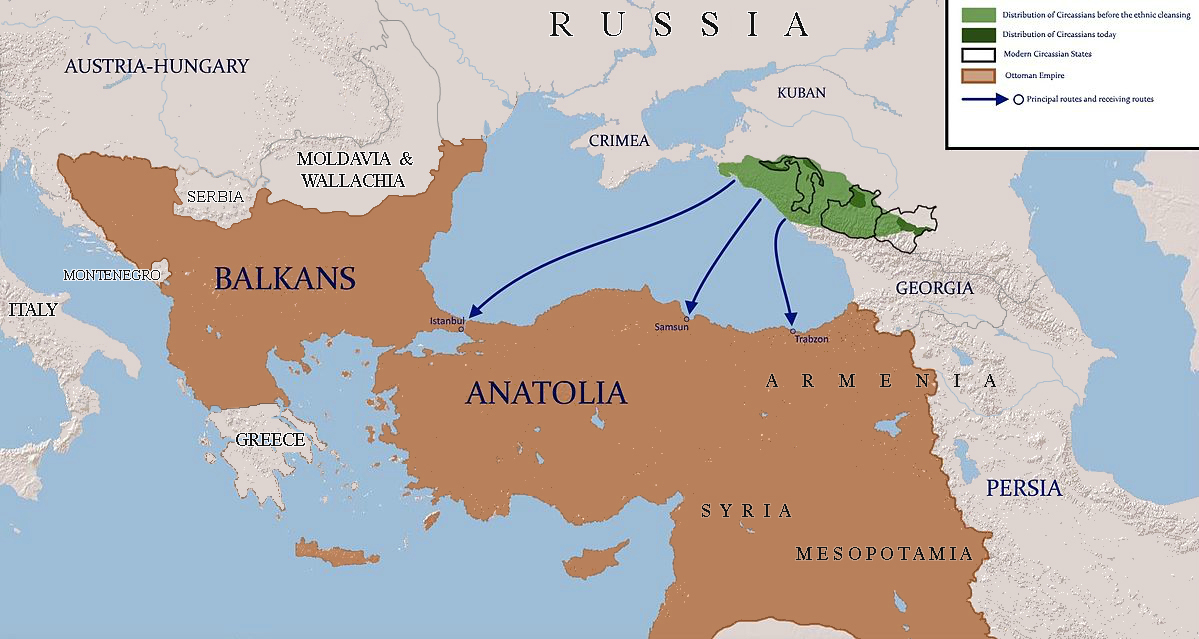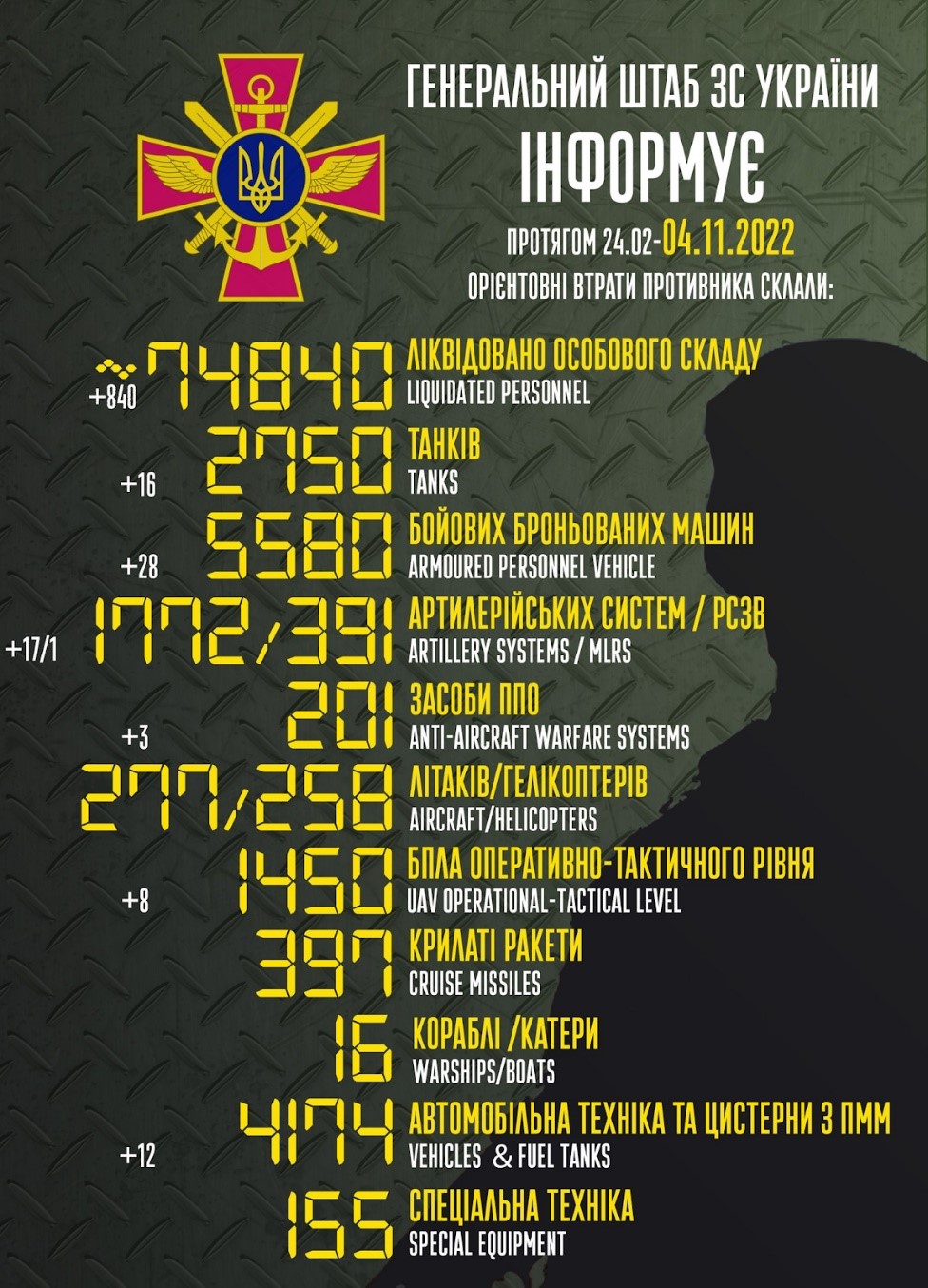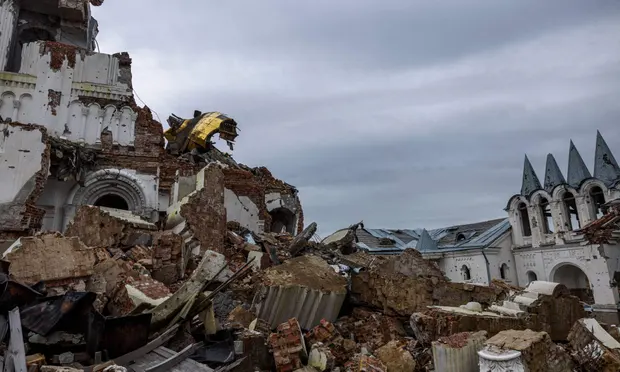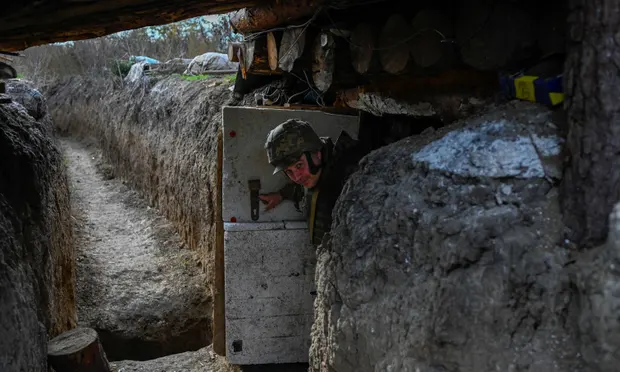Above: “Circassian Genocide”. Russia conducted a genocide against people in the Kabardino-Balkaria region under Peter the Great and Stalin. Today, moscow is sending the men to frontlines in Ukraine. (Wikipedia)
- The Russian military continues to face pronounced supply issues of critical military equipment. The United Kingdom Ministry of Defense (MoD) reported on November 3 that the Russian military is struggling in Ukraine partially due to issues in sourcing artillery ammunition and armored vehicles.
- The UK MoD reported that in mid-October Russian forces in Ukraine were losing more than 40 armored vehicles a day, which the UK MoD assessed was roughly equivalent to a battalion’s worth of equipment. The UK MoD also reported that Russia has likely resorted to negotiating the supply of a 100 tanks and armored vehicles from Belarusian stocks in recent weeks.
- Despite the announced end of partial mobilization, the military leadership of the russian federation continues to recruit so-called “volunteers” to participate in the war on the territory of Ukraine. Military commissars received instructions on the further formation of so-called volunteer units. These “volunteers” can become men with cleared criminal records, without age restrictions and in any state of health, except for persons with official disabled status. In order to avoid legal and financial obligations, the conclusion of a contract with the Ministry of Defense of the russian federation with such persons is not envisaged.
- Russian sources reported that Russian officials in the Republic of Karelia and the Republic of Kabardino-Balkaria are still issuing mobilization summonses. The continuation of mobilization efforts and the pursuit of crypto mobilization will likely reduce the efficacy of the fall 2022 conscription cycle in the Russian Federation.
- Russian sources reported that mobilized personnel continue to not receive training, equipment, and supplies. A Russian source reported on November 2 that mobilized personnel in Pskov are sick, starving, and sleeping on the streets.
- The Russian military also continues to face issues with disorderly conduct among mobilized personnel. A Russian source reported that Russian military police appealed to the Russian Ministry of Internal Affairs for help in restoring order after more than 350 drunk and disorderly mobilized personnel arrived at a train station in Belgorod Oblast.
- Ukrainian Ministry of Defense (MoD) spokesperson Oleksandr Motyzyanyk reported on November 3 that Russian forces and occupation officials have used provisions under the martial law decree to increase filtration measures, force civilians to build fortifications, and steal Ukrainian property and historical items.
Above: Another destroyed enemy tank near Kamianka, Kharkiv. (CBC)
Ukrainian General Staff of the Armed Forces estimated enemy losses for last 24 hours
- Liquidated personnel, 74,840 (+840)
- Tanks, 2,750 (+16)
- Armored personnel vehicles, 5,580 (+28)
- Artillery systems/MLRS, 1,772/391 (+17/1)
- Anti-aircraft warfare systems, 201 (+3)
- Aircraft/helicopters, 277/258 (0)
- UAV operational-tactical level, 1,450 (+8)
- Cruise missiles, 397 (0)
- Warships/boats, 16 (0)
- Vehicles and fuel tanks 4,174 (+12)
- Special equipment, 155 (0)
Above: Dnipro city. (Aljazeera)
- The enemy continues to strike critical infrastructure and civilian homes in violation of International Humanitarian Law, the laws and customs of war.
- During the current day, the enemy launched 3 missile and 16 air strikes, carried out more than 40 MLRS attacks.
- Areas of more than 25 settlements were hit by enemy attacks. In particular, these are Pavlohrad in Dnipropetrovsk oblast and Avdiivka and Vuhledar in Donetsk oblast.
- The threat of new strikes and the use of attack UAVs remains, in particular from the territory of the republic of belarus.
- The situation in the Volyn and Polissya directions has not changed significantly. The republic of belarus continues to support the armed aggression of the russian federation against Ukraine.
- The enemy shelled in other directions:
- in the Siversky direction – from mortars and barrel artillery, in the areas of Vilchyky settlements of Chernihiv oblast and Stara Huta, Sosnivka and Novovolodymyrivka of Sumy oblast;
- in the Slobozhanskyi direction – in the areas of the settlements of Hatyshche, Kozacha Lopan, Ohirtseve and Strilecha. The enemy used an attack UAV;
- in the Kupyansk and Lyman directions – from mortars, barrel and rocket artillery, in the areas of Verkhnokamianske, Spirne and Zvanivka settlements;
- in the Bakhmut direction – from tanks, mortars, barrel and rocket artillery, in the areas of the settlements of Soledar, Opytne, New York, Ozaryanivka and Kurdyumivka;
- in the Avdiivka direction – from tanks and various caliber artillery, in the areas of Maryinka, Novomykhailivka, Nevelske and Vodyane settlements;
- in the Novopavlivsk and Zaporizhzhia directions – from artillery of various types, in the areas of the settlements of Vuhledar, Kamianske and Vremivka.
- In the South Buh direction, more than 35 settlements along the contact line suffered fire damage. In addition, the enemy continued to conduct aerial reconnaissance, actively using UAVs. Made more than 30 flies.
Above: Ukrainian squad near a BM-21 Grad missile launcher in Kharkiv Oblast. (The Guardian)
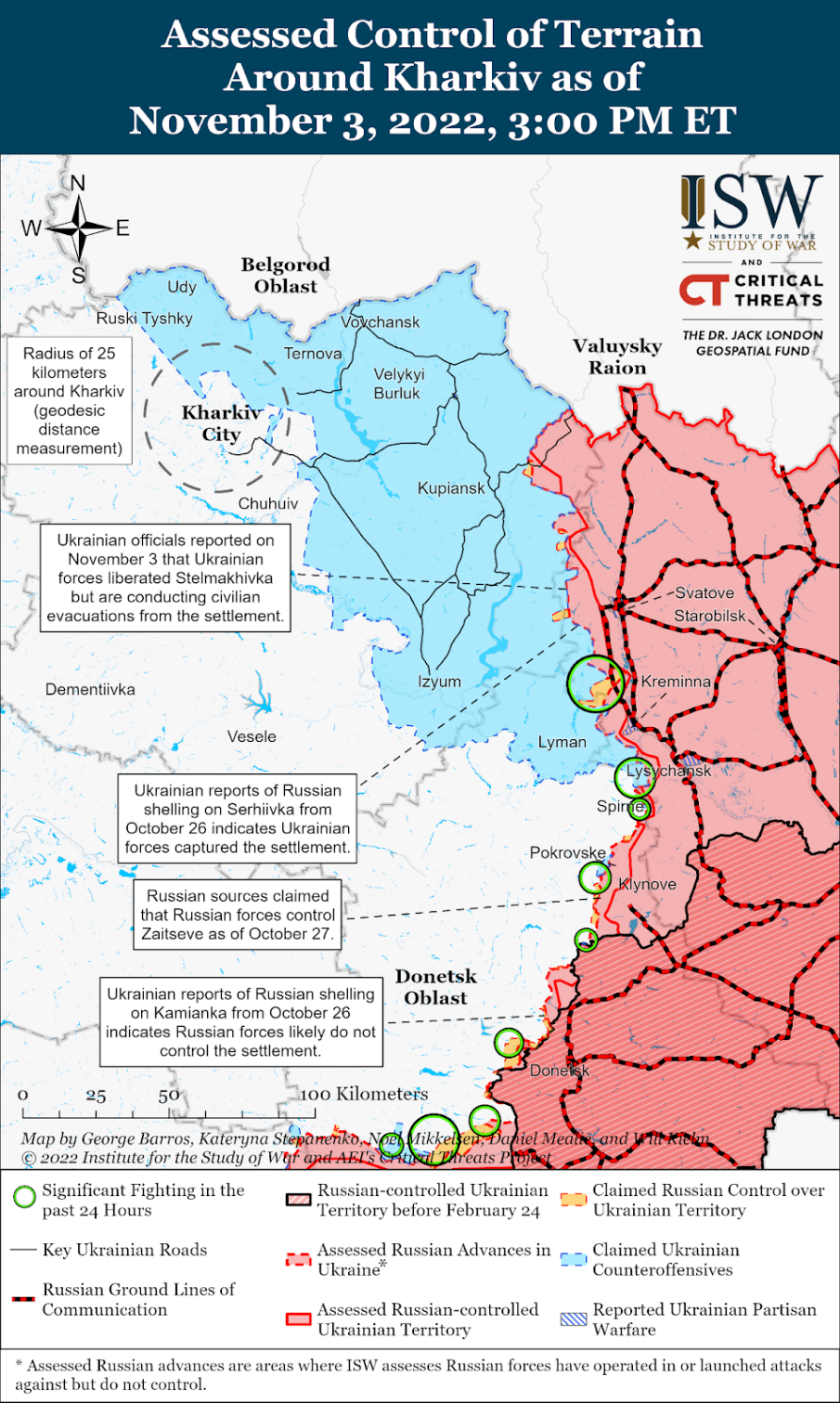 Map via ISW
Map via ISW- Russian forces conducted assaults in eastern Kharkiv Oblast and western Luhansk Oblast to regain limited lost territory and to constrain the actions of Ukrainian forces on November 3. Ukrainian General Staff Deputy Chief Oleksiy Hromov reported that Russian forces conducted three offensive operations in separate unspecified directions in the direction of Kharkiv.
- The Ukrainian General Staff reported that Ukrainian forces repelled Russian assaults northwest of Kreminna near Makiivka and Nevske (18km northwest of Kreminna) and south of Kreminna near Bilohorivka (12km south of Kreminna) in Luhansk Oblast.
- The Ukrainian General Staff reported on November 3 that Russian forces use the civilian population in Svatove, Luhansk Oblast as “human shields” by placing Russian personnel in businesses and schools and requiring that residents show up to work and that children attend classes.] Russian occupation officials and forces are likely to continue to engage in measures that are coercive and that endanger residents living in Russian-occupied territories.
Above: Ruins of the Sviatohirsk cave monastery in Donetsk Oblast. (The Guardian)
 Map via ISW
Map via ISW- Russians conducted over 40 ground attacks in the Bakhmut, Avdiivka, and western Donetsk Oblast areas in the past 24 hours, sustaining over 300 casualties (100 killed) in just one direction. Russian forces would likely have had more success in such offensive operations if they had waited until enough mobilized personnel had arrived to amass a force large enough to overcome Ukrainian defenses despite poor weather conditions. Russian attacks continuing current patterns are unlikely to generate enough momentum to regain the battlefield initiative.
- The Ukrainian General Staff reported that Ukrainian forces repelled assaults on Bakhmut itself and near Verkhnokamianske (28km northeast of Bakhmut), Spirne (25km northeast of Bakhmut), and Mayorsk (20km south of Bakhmut). Ukrainian General Staff Deputy Chief Oleksiy Hromov reported that Russian forces launched airstrikes on Ukrainian positions in Soledar and Bakhmut.
- The Ukrainian General Staff reported that Ukrainian forces repelled Russian ground assaults near Pavlivka, Vodyane (roughly 6km northeast of Vuhledar), Prechystivka (12km west of Vuhledar), and Novomykhailivka (roughly 10km south of Marinka).
- Russian forces prematurely deployed an insufficient concentration of mobilized personnel on offensive pushes near Bakhmut and Vuhledar, Donetsk Oblast, wasting the fresh supply of mobilized personnel on marginal gains towards operationally insignificant settlements.
Above: Ukrainian defender in a fox hole on the frontlines of Kherson. (The Guardian)
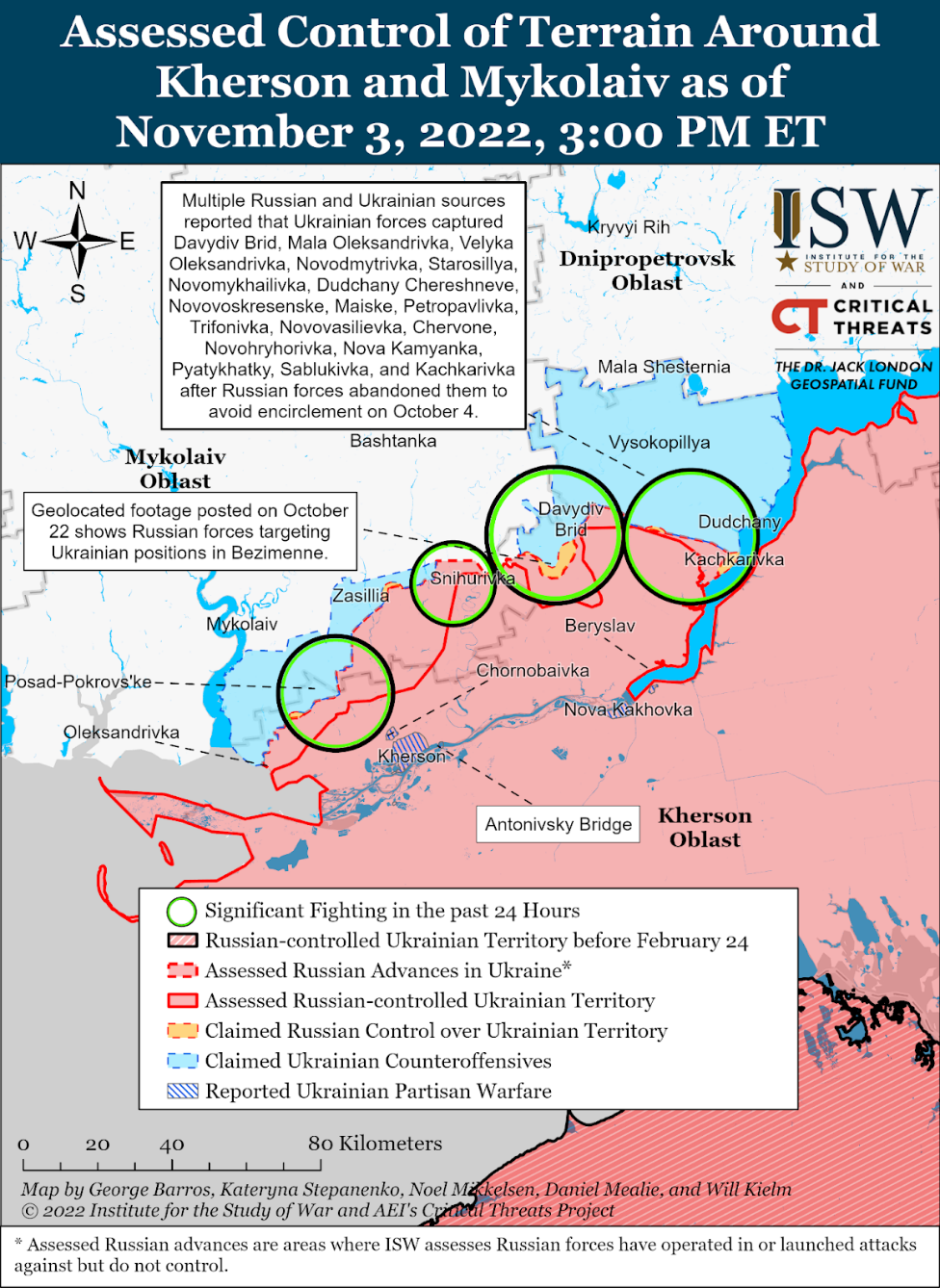 Map via ISW
Map via ISW- Ukrainian and Russian sources continued to offer limited information regarding the situation on the frontlines in northwestern and northern Kherson Oblast on November 3.
- Ukrainian military officials reported that Russian forces struck liberated settlements of Khreschenivka and Bilyavka in the Beryslav Raion with S-300 anti-aircraft missiles and Uragan MLRS rockets.
- Russian forces are continuing to withdraw some elements from northwestern Kherson Oblast, but it is still unclear if Russian forces will fight for Kherson City. ISW has observed that Russian forces are continuing to prepare fallback positions on the left (eastern) bank of the Dnipro River while continuing to set up defensive positions northwest of Kherson City and transporting additional mobilized forces there.
- The Ukrainian General Staff reported that Russian occupation officials continued forced evacuations of settlements on the east bank of the Dnipro River from Velyka Znamyanka, Zaporizhia Oblast to Nova Kakhovka, Kherson Oblast, more than 100km apart.
- Ukrainian and Russian sources also extensively discussed the reported closure of some Russian checkpoints in the vicinity of Kherson City, the theft of city’s monuments, and the removal of a Russian flag from the Kherson Oblast Administration building as indicators of an ongoing Russian withdrawal from the city.
- A Russian outlet claimed that Russian officials removed the flag because the occupation administration moved to Henichesk by the Crimean border. While the relocation of the Kherson Oblast occupation government may suggest that Russian forces are preparing to abandon Kherson City, it may equally indicate that they are setting conditions for urban combat within the city.
- Russian authorities may be setting conditions to imminently transfer the Zaporizhzhia Nuclear Power Plant (ZNPP) to the Russian power grid following the International Atomic Energy Agency’s (IAEA) November 3 statements affirming that Ukrainian authorities are not misusing nuclear materials.
- The IAEA also stated on November 3 that shelling damaged external powerlines to the ZNPP in Ukrainian-held territory at points 50-60km away from the plant, completely cutting power to the ZNPP just one day after Ukrainian authorities transferred two reactors to a hot shutdown mode to generate heat for Enerhodar. This timing suggests that Russian authorities seek to force the transfer of the ZNPP to the Russian power grid by painting Russian control as the only viable option to provide electricity to the ZNPP and heat to Enerhodar and the surrounding area.
Video: From Gen Staff: “Ukraine’s Southern Operational Command reported that Ukrainian forces struck a Russian alternative river crossing route in the area of the Antonivsky Bridge, and geolocated footage reportedly showed a series of explosions on barges underneath the Antonivsky Bridge from the right (western) Dnipro River bank.”
These appear to be very accurate strikes on the barge crossing below the #Antonovsky bridge.
HIMARS? Let's wait for confirmation. pic.twitter.com/LUl2KIkZDE
— Fella Campeador 🇺🇦✊ (@AldemiraVeiga) November 2, 2022
